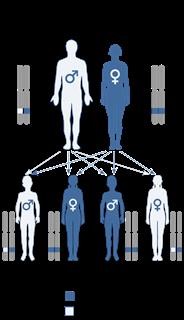The Infertility Organization
Female Infertility by Age
We are the complete source for total info and resources for Female Infertility by Age online.
IUI with the partner’s sperm can be used as a potentially effective treatment for infertility in women under age of 45 except for cases with tubal blockage, very poor egg quality, ovarian failure and severe male factor infertility (very low sperm count or very poor sperm shape or mobility). Many health conditions can make it hard to get pregnant. 389 KB ARTICLES FROM THE 1980s Microsurgical Reversal of Female Sterilization: The Role of Tubal Length. (PDF, 2 MB) Fertility and Sterility, 1980. Problems in the uterus or fallopian tubes can prevent the egg from traveling from the ovary to the uterus, or womb.
About half the women with hormonal imbalances do not produce enough follicles to ensure the development of an ovule, possibly due to poor hormonal secretions from the pituitary gland or the hypothalamus. If this is unsuccessful, the dosage may be increased to 100 mg daily. It is in fact possible to restore ovulation using appropriate medication, and ovulation is successfully restored in approximately 90% of cases. 8,33,35,36 Lastly, in vitro fertilization, with or without intracytoplasmic sperm injection, is the mainstay of assisted reproductive technology for male factor infertility. The vast majority of anovulation patients belong to the WHO2 group and demonstrate very heterogeneous symptoms ranging from anovulation, obesity, biochemical or clinical hyperandrogenism and insulin resistance.[14] Treatments[edit] Anovulation can potentially be reversed by lifestyle changes.[15] Lifestyle changes[edit] In women with polycystic ovary syndrome with anovulation, weight loss generally results in improved menstrual regularity, ovulation, and pregnancy rates.[16] In otherwise healthy women with anovulation, avulatory disorders may be favorably influenced by a healthy diet such as a higher consumption of monounsaturated fats rather than trans fats, vegetable rather than animal protein sources, high fat dairy, multivitamins, and iron from plants and supplements.[15] Ovulation induction[edit] The main alternatives for ovulation induction medications are: Antiestrogen, causing an inhibition of the negative feedback of estrogen on the pituitary gland, resulting in an increase in secretion of follicle-stimulating hormone. However, it could be the future for the treatment of multiple diseases, including infertility.
More Info Around Female Infertility by Age

Below are Some Even more Resources on Female Infertility by Age
In ZIFT, your doctor places the fertilized eggs -- at this stage called zygotes -- into your fallopian tubes within 24 hours. Practice Committee of American Society for Reproductive Medicine in collaboration with Society for Reproductive Endocrinology and Infertility. 50% are female causes with 25% being due to anovulation and 25% tubal problems/other.[74] In Sweden, approximately 10% of couples wanting children are infertile.[75] In approximately one third of these cases the man is the factor, in one third the woman is the factor, and in the remaining third the infertility is a product of factors on both parts. 37,38 The addition of 1,500 to 1,700 mg of metformin (Glucophage) daily may increase ovulation and pregnancy rates, but it does not significantly improve live birth rates over clomiphene alone. Negative tests with immotile sperm in the cervical mucus suggest rare immunological causes of sterility. The main approach to correcting or removing these uterine abnormalities is by hysteroscopy, a surgical method by which a narrow scope with a camera is placed within the uterine cavity.
Below are Some Even more Information on Diagnosis of Infertility Ppt
Temperature charting is a useful way of providing early clues about anovulation, and can help gynaecologists in their diagnosis. For example, high cortisol levels are seen in patients with Cushing syndrome, which causes negative feedback on the pituitary to decrease LH release.
Below are Some Even more Resources on Infertility Genetic Material
IVF/ICSI is a process by which the oocyte is fertilized by a sperm outside the body: in vitro, and then a gamete retransferred intrauterine. World Health Organization[edit] The World Health Organization defines infertility as follows:[10] United States[edit] One definition of infertility that is frequently used in the United States by reproductive endocrinologists, doctors who specialize in infertility, to consider a couple eligible for treatment is: a woman under 35 has not conceived after 12 months of contraceptive-free intercourse. Transplantation of Rat Kidneys with Acute Tubular Necrosis into Salt-loaded and Normal Recipients. (PDF, 2 MB)Surgery, 1975. Chemotherapy: Some types may significantly reduce sperm count. Enzymatic Digestion of Testicular Tissue May Rescue the Intracytoplasmic Sperm Injection Cycle in Some Patients with Non-obstructive Azoospermia. (PDF, 66 KB) Human Reproduction, 1998. First Fallopian Tube-Ovary Transplant Carried Out. (PDF, 2 MB) Welcome Trends in Ob/Gyn, 1985. 40 Patients using these agents should be counseled about these risks. Microsurgery for the Undescended Testicle. (PDF, 5 MB) Urologic Clinics of North America, 1982. Affected individuals displayed more severe forms of infertility such as azoospermia and severe oligozoospermia.[27] Other causes[edit] Factors that can cause male as well as female infertility are: DNA damage DNA damage reduces fertility in female ovocytes, as caused by smoking,[28] other xenobiotic DNA damaging agents (such as radiation or chemotherapy)[29] or accumulation of the oxidative DNA damage 8-hydroxy-deoxyguanosine[30] DNA damage reduces fertility in male sperm, as caused by oxidative DNA damage,[31] smoking,[28] other xenobiotic DNA damaging agents (such as drugs or chemotherapy)[32] or other DNA damaging agents including reactive oxygen species, fever or high testicular temperature.[33] The damaged DNA related to infertility manifests itself by the increased susceptibility to denaturation inducible by heat or acid [34] or by the presence of double-strand breaks that can be detected by the TUNEL assay.[35] General factors Diabetes mellitus,[36][37] thyroid disorders,[38] undiagnosed and untreated coeliac disease,[39][40][41][42] adrenal disease[43] Hypothalamic-pituitary factors Hyperprolactinemia Hypopituitarism The presence of anti-thyroid antibodies is associated with an increased risk of unexplained subfertility with an odds ratio of 1.
Previous Next
See also
Infertility of Unknown Etiology
Who Invented Infertility
Infertility Islamic View